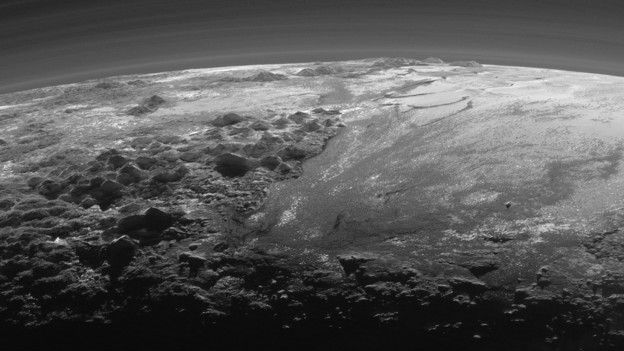 Image copyright AP
Image copyright AP Probe NASA’s “New Horizons”, which recently flew past Pluto, broadcast new pictures of the planet’s surface, which is fixed fog creeping over the surface of Pluto.
Also in the photos – a breathtaking view of the rocky mountains of the dwarf planet and its great plains.
July 14 “New Horizons” has collected a lot of data during its flyby of Pluto at a distance of 12,500 kilometers.
Scientists believe that the photographed smoke – is further evidence of the equivalence of Pluto and Earth’s water cycle.
Earlier this month, the probe began dumping collected for the year of data that will allow scientists to resume analysis of the topography and atmosphere.
The new side view of Pluto was sent to Earth on September 13. Dramatic lighting from the sun helps to highlight varied terrain dwarf planet and more than a dozen layers of haze in its atmosphere, which extends for at least 100 km above the surface.
The head of the scientific mission of professor Alan Stern said: “These photos really make you feel as if you are there on Pluto themselves the landscape”.
He added: “These pictures – a bonanza for scientists. They reveal new details about Pluto’s atmosphere, mountains, glaciers and valleys “.
” Not only do these images is absolutely stunning, but in addition to this haze gives an idea of the weather on Pluto varies from day of the day, just as it does on Earth, “- said a member of the space mission, an employee of Lowell Observatory in Arizona Will Grundy.
Among other observations, the resulting images show similar to the terrestrial hydrological cycle, with the participation of frozen nitrogen and soft ice.
Professor Stern said: “Pluto is remarkably similar to Earth in this regard”.
Photo dwarf planet, published last week, NASA also showed a field of dark, aligned ridges that look like inflated wind dunes.
The next scheduled flight, “New Horizons” is planning to visit a second icy objects in the distant region of our solar system known as the Kuiper Belt.
No comments:
Post a Comment